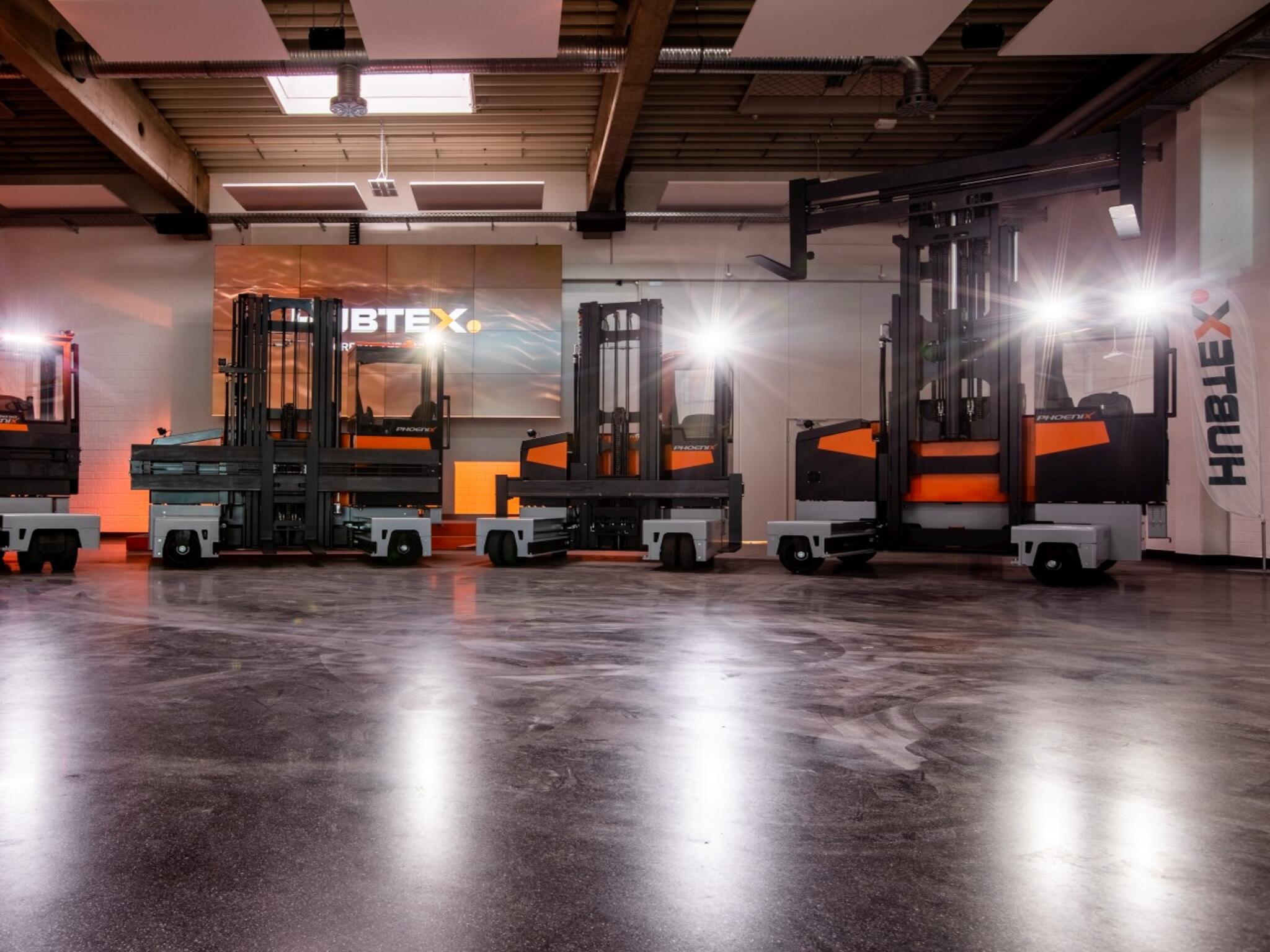Are you AGV ready?
Our whitepaper on this topic will give you answers to your questions.
AUTOMATION AT
HUBTEX
MULTI-DIRECTIONAL SIDELOADERS, PLATFORM TRANSPORTERS, SPECIAL-PURPOSE VEHICLES
One of the most complex tasks in the intralogistics sector is handling long loads. That's why for manufacturers of forklift trucks and special-purpose vehicles, vehicle automation is a top priority. The handling of long, heavy and bulky loads is an area that Hubtex Maschinenbau GmbH & Co. KG excels in. In autumn this year, the company is for the first time planning to showcase an automated guided vehicle (AGV) tailored for handling long loads. All recently developed multidirectional sideloaders will form the basis of this vehicle. Hubtex has already planned the step-by-step automation of these sideloaders with assistance systems. The basic design of the vehicles includes cable runs, brackets and sensors with which the vehicles can be retroactively automated.
An increasing number of companies from diverse sectors are turning to driverless goods vehicles in a bid to make warehouse processes more efficient and economical. The aim is to maintain a high supplier performance while contending with a lack of skilled workers and increasing requirements in terms of quality and speed of turnover. When it comes to handling long loads, there are, as yet, no fully automated goods vehicles in which safety functions and drive kinematics can be adjusted to the various loads and their resulting dimensions. "One of the biggest challenges of automation is being able to identify the centre of gravity of long and bulky loads so that they can be retrieved and transported safely," explains Frank Knurr, a sales engineer at Hubtex who is responsible for expanding the company's portfolio of driverless goods vehicles. "Our electric multidirectional sideloaders can already be automated gradually and individually, in accordance with customer requirements."
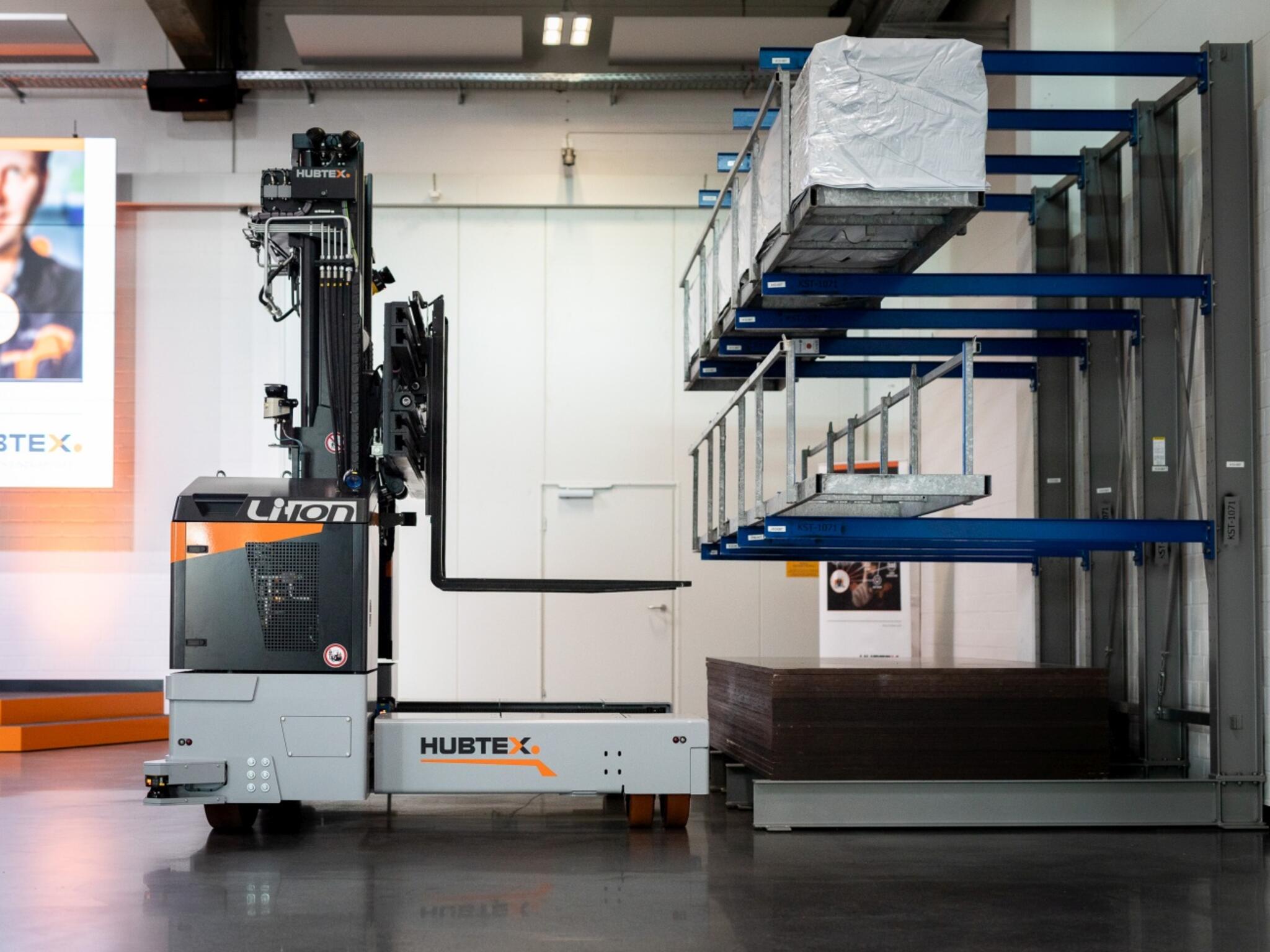
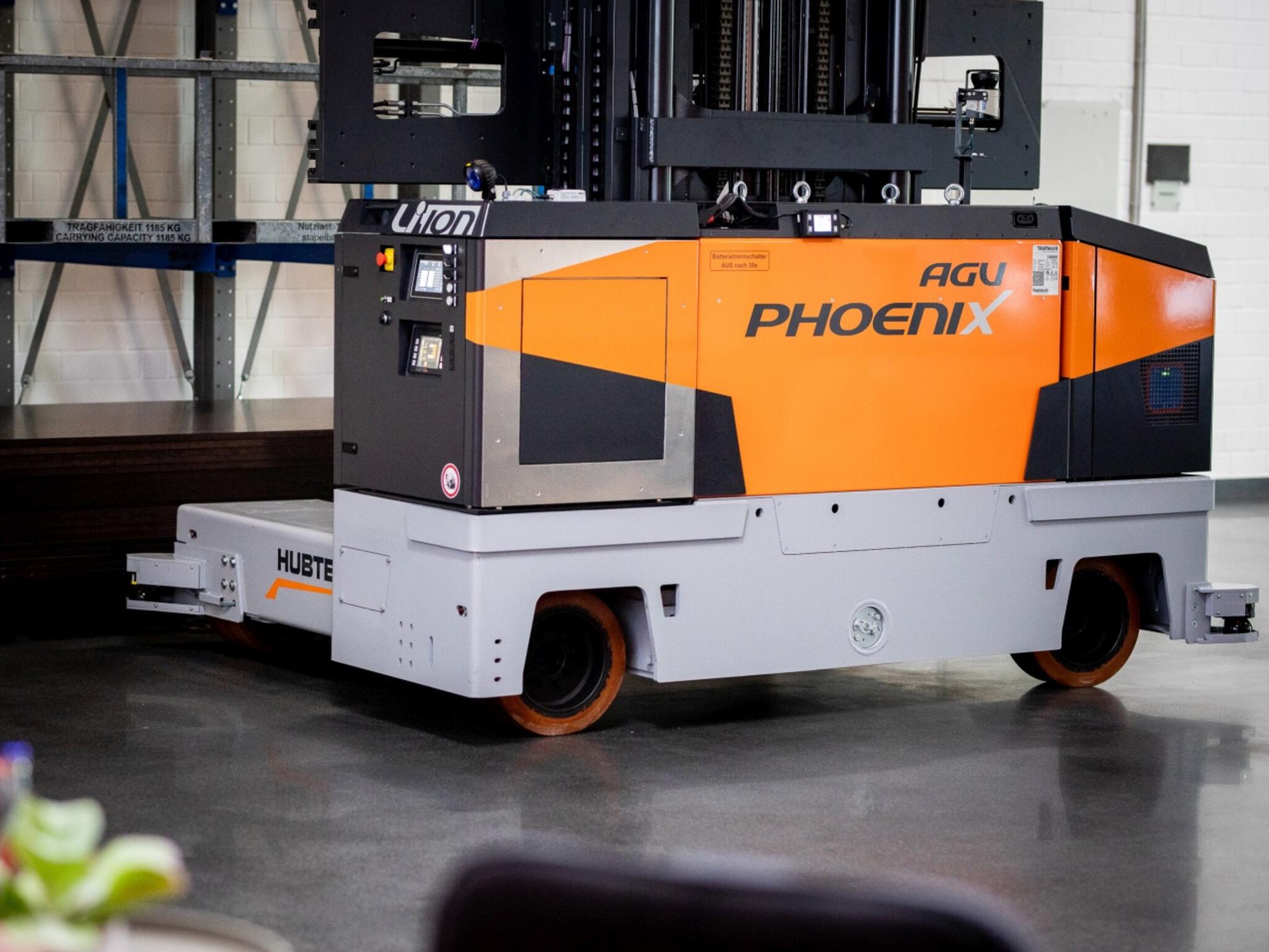
Hubtex uses a modular system design with automated functions and assistance systems which can be integrated step-by-step into series-production vehicles. For example, an automated rack-positioning system directly navigates the operator to the correct rack after the warehouse position has been entered. The Hubtex Load Manager can also be integrated into electric multidirectional sideloaders, ensuring that preprogrammed lifting heights can be reached automatically. Using the assistance solutions, the partially automated vehicles can already perform steering, driving and lifting movements automatically. Hubtex integrates all systems into one single platform. This means that the various solutions can still be extended and combined with each other retroactively. In May, Hubtex will present its latest generation of electric multidirectional sideloaders for the first time. The company consistently focused on the aspect of automation when designing the vehicle series: cable runs and sensor positions have been planned in such a way that the vehicle can be gradually automated beyond its basic design.
INTRODUCING OUR NEW fully-automated multidirectional sideloader PHOENIX AGV
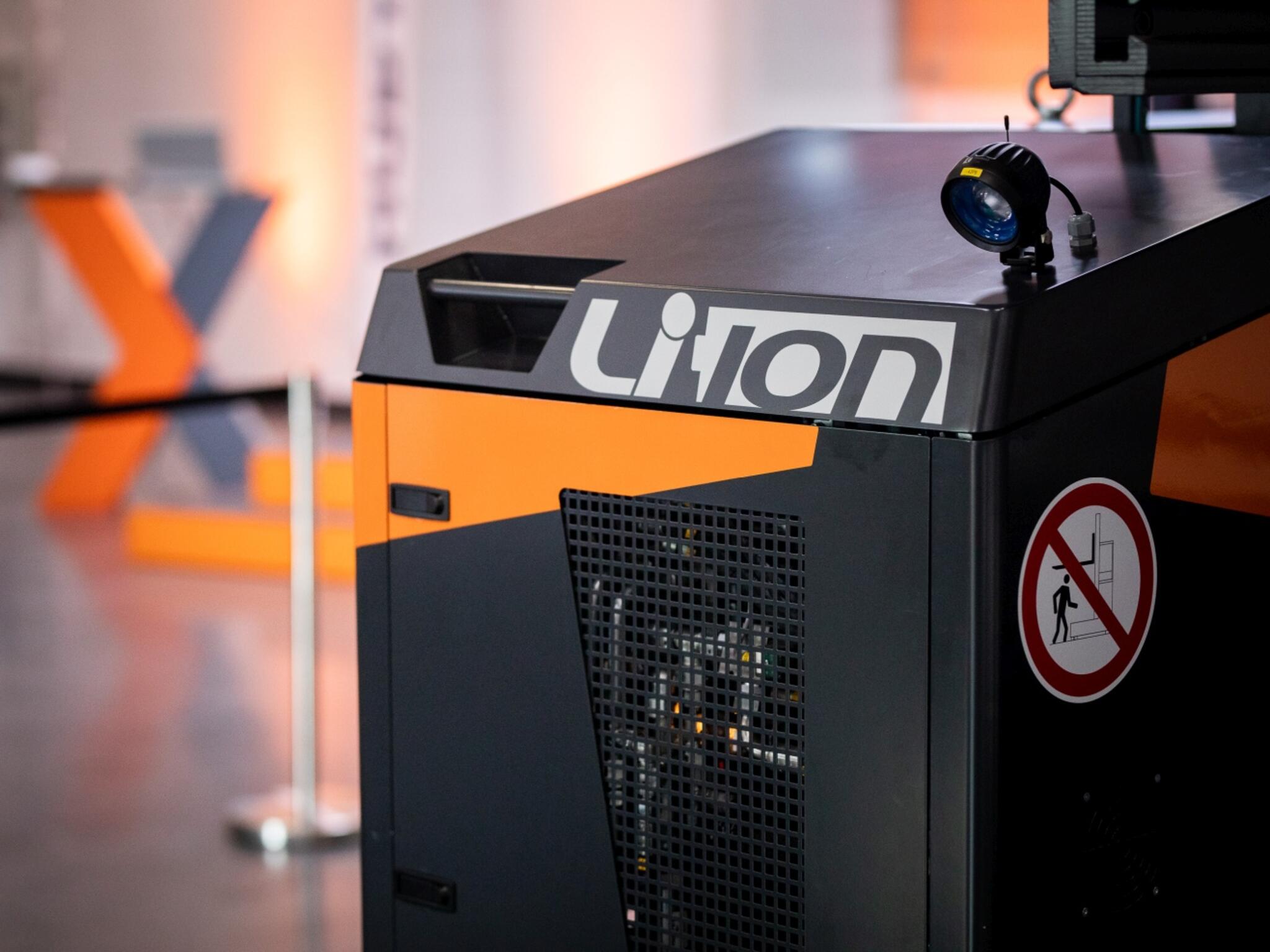
The different stages of automation
in Detail
WHAT ARE THE TECHNICAL REQUIREMENTS for automation?
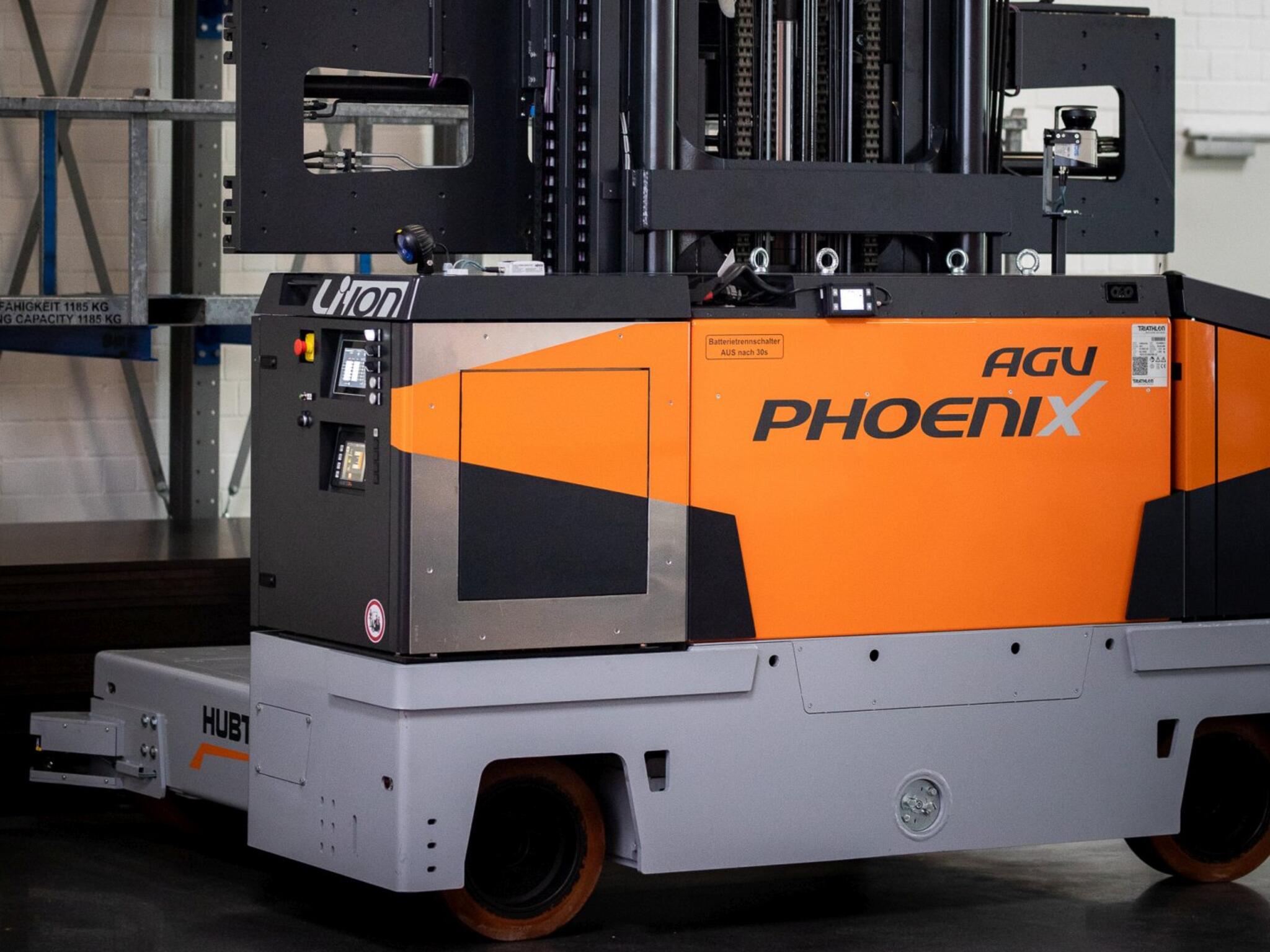
DISCOVER THE ADVANTAGES FOR YOUR APPLICATION
We know that the handling of long goods presents users with special challenges. To be able to offer you the best possible solution for your application, we recommend that you inform us of your individual requirements with just a few clicks and without obligation.
YOUR QUESTIONS - OUR ANSWERS
AT A GLANCE
What are the possible uses of artificial intelligence and machine learning applications in the field of sideloaders, multi-directional forklifts and special vehicles?
The requirement for us industrial truck manufacturers is to combine real application scenarios of our customers and handling tasks with the processes of artificial intelligence (AI) or machine learning. This can be, for example, the recognition of different containers and loads. These often differ in shape, colour, condition or design. Humans can clearly recognize these specifications, the machine itself reaches its limits here. But by means of AI and machine learning, these limits can be overcome in the future. HUBTEX is currently working very intensively on the possible applications on our vehicles. Automated sideloaders and special vehicles are important core topics in our development.
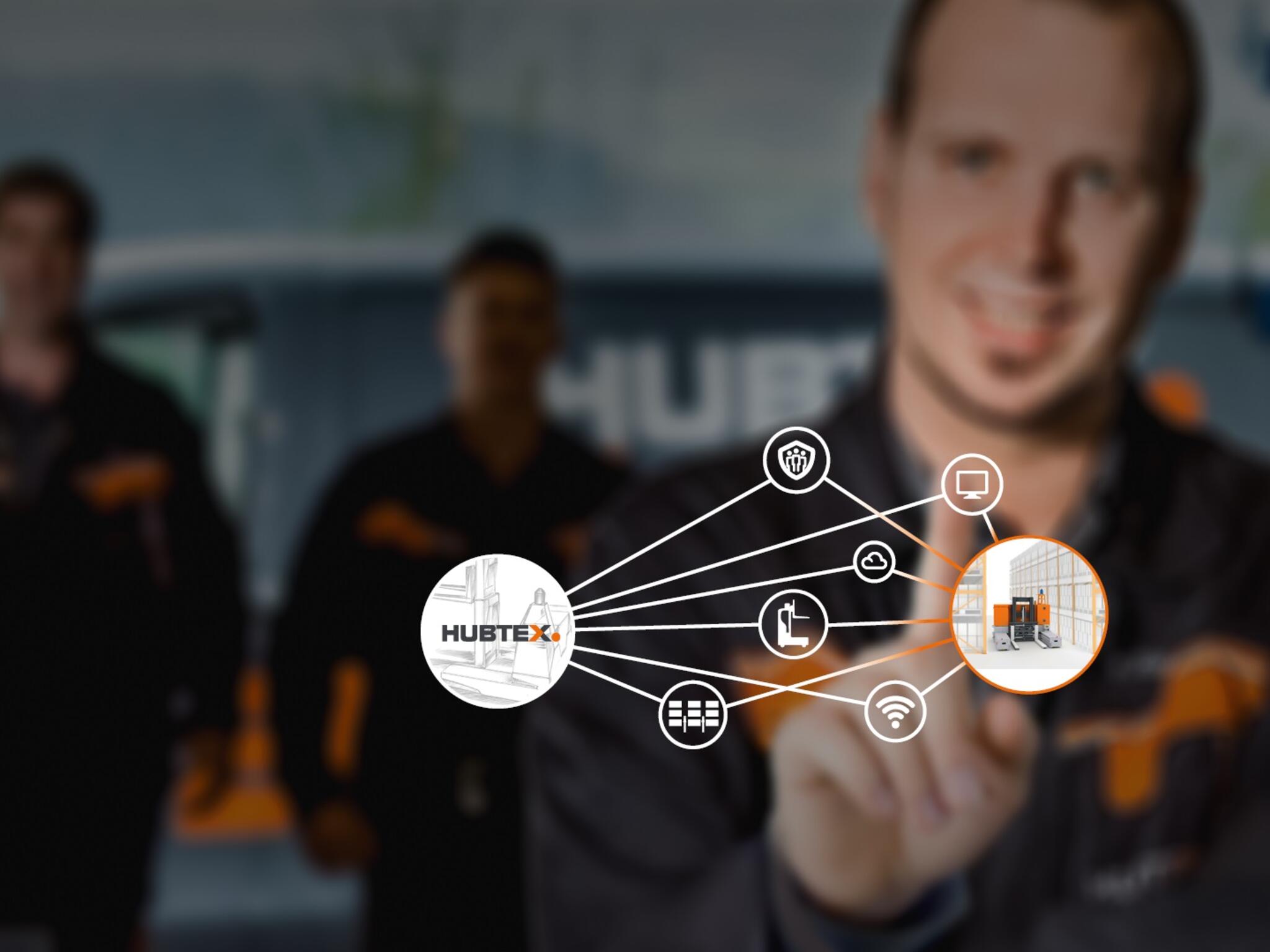
What infrastructure do you provide to ensure the exchange of information along the entire supply chain?
Together with our customers, we develop an individually adapted interface concept that creates an ideal connection between vehicle and conveyor technology in the mostly complex overall systems. In addition, we ensure that the vehicle and the warehouse management system are optimally coordinated. An example: The ideal storage location is clearly determined by the dimensions and weight of the goods and is communicated to the forklift drivers via the process technology directly into the vehicle. After the operator has entered the storage position, our optionally integrable automatic shelf compartment positioning system ensures that the truck positions itself directly and precisely in front of the correct shelf compartment. We provide further assistance for storage and retrieval directly on the shelf with our Hubtex Load Manager. This enables a freely programmable lifting height preselection and can be interlocked with the aforementioned system. After the forklift drivers have acknowledged the end position, the pallets are stored in the allocated space with millimetre precision. All our assistance systems can be controlled via the Hubtex Information Terminal (HIT3).
What solutions do you offer for integrating manually operated and automated industrial trucks and, if necessary, also the storage and battery charging infrastructure into a networked overall system?
There is no generally valid solution to this question for our vehicle range. However, one of our core competencies as a manufacturer of special purpose machines is to develop the appropriate solutions for our customers' individual requirements. In doing so, we take into account the entirety of all logistics and production processes and advise our customers on the most economical and efficient solution for them. The networking of the vehicle control with the warehouse logistics and the warehouse management system as well as the integration of a battery management system are recurring tasks.
What are the requirements of Industry 4.0 and Logistics 4.0 for your customer service?
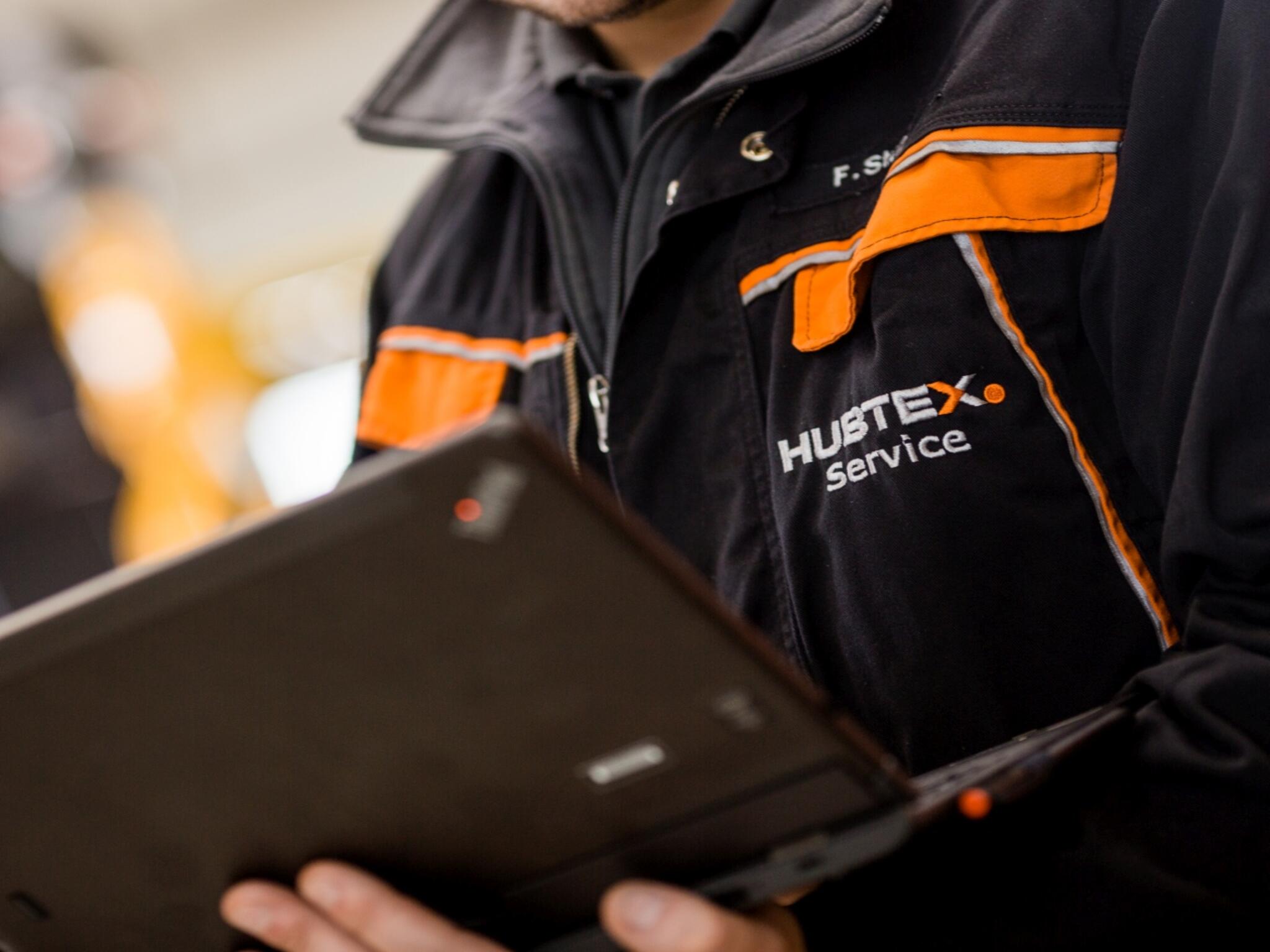
Our new operator terminal has numerous functions that facilitate the digital networking of vehicles with the entire infrastructure. This enables us to connect our in-house predictive maintenance solution, for example. This allows us to monitor all relevant data remotely and in advance via the cloud of things. In this way, we meet an important requirement in the age of Industry 4.0: Identifying and eliminating maintenance needs at an early stage so that the vehicle's functionality is maintained for as long as possible.
Which partially or fully automated solutions/systems does HUBTEX offer?
Partially and fully automated solutions are currently more in demand than ever before, especially in special vehicle construction. We recognize that the boundaries between partially and fully automated systems are becoming increasingly blurred. Examples of this can be found in heavy-duty transport vehicles in the automotive industry or in order-picking vehicles in the timber industry. Due to the large number of possible applications and the heterogeneity of loads, there are, from our perspective, many individually adapted special solutions in this area. Today, it is becoming increasingly important to equip vehicles with numerous assistance systems in order to increase safety for people and goods as well as the efficiency of processes. This includes, among other things, the networking of the vehicle control system with the warehouse management system for (semi-)automatic shelf compartment positioning. In our estimation, our core product, electric reusable forklifts, will in the medium term transport long loads, for the most part fully automatically.
To what extent has HUBTEX already reacted to the requirements regarding automation?
In the area of our special and customized vehicles, the subject of automation has been with us for many years. In the area of our volume product, the electric multidirectional sideloader, there is, in our estimation, no solution that can cover the typical application requirements in the area of long goods handling of multidirectional sideloaders as an automated system.
Therefore we have already designed our vehicles of the new Phoenix series in their basic configuration for step-by-step automation. A new generation of vehicle control, pre-planned cable paths, positions for sensors and other equipment features are proof of this. Numerous assistance systems can be integrated into the vehicles if required. One example of this is laser-assisted navigation, which will be available for the first time in this vehicle series. In future, drivers will be able to position the truck with millimetre accuracy, which will bring a number of advantages in practice. Our multi-level concept in the field of automation starts with the integration of assistance systems and extends to fully automated vehicle solutions. With this forward-thinking approach, we support companies in equipping themselves to meet the challenges of the digital age. In the end, the solution must always be tailored to the specific application.




